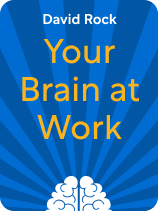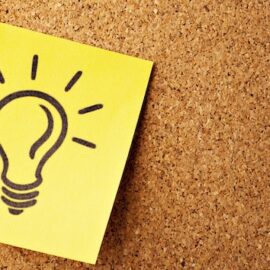

This article is an excerpt from the Shortform book guide to "Your Brain at Work" by David Rock. Shortform has the world's best summaries and analyses of books you should be reading.
Like this article? Sign up for a free trial here.
When is your energy at its peak? What kind of tasks should you do in the morning?
David Rock claims that, when you’re aware of the fluctuation of your brain’s energy levels, you can plan your day around your ebbs and flows, enhancing your productivity. He looks at the science behind your brain’s energy use and gives you approaches to work in tandem with your energy levels.
Keep reading to learn how to schedule your day by leveraging your brain’s energy.
How to Schedule Your Day
When you learn your brain’s patterns, you can coordinate tasks that require your peak performance with times when your energy levels are highest. Conversely, you can schedule refueling or low-energy tasks for when you predict you’ll need them. Let’s take a look at the science and then review Rock’s advice on how to schedule your day.
The Science
Today’s work environment often requires a series of cognitive tasks that drain the brain’s energy rapidly, decreasing productivity. Cognitive tasks occur in the area of the brain called the prefrontal cortex and include complex processes like critical thinking, problem-solving, and planning. When performing a cognitive task, your brain summons a large, interconnected neural network that includes all related data. For example, if you’re trying to plan for your next meeting, your brain will retrieve a network that consists of protocols your job requires, memories of past meetings, and even emotions tied to how well the meeting went last time. Your prefrontal cortex must sort through the network and decide what is necessary to focus on—all within milliseconds.
(Shortform note: Rock bases his theories of neural networks on assumptions that were widely accepted at the time his book was published: that the brain’s different regions perform distinct functions such as rational thinking in the prefrontal cortex. Recent research, however, has cast doubt on that theory. According to neuroscientist Lisa Feldman Barrett in Seven and A Half Lessons About the Brain, because neural networks (she calls them clusters) are so interconnected and incorporate every part of the brain, it’s not accurate to say that different brain regions process different functions. She argues that it’s more accurate to think of the brain as a complex and active web of neurons.)
When your brain is fully energized, sorting through your neural network is fast and easy. But, if you’re running low on energy, your brain struggles to focus on what’s important and can get distracted or overwhelmed with tangential information within that network. For example, if you’re not energized while planning the meeting, your brain’s attention might slip into a connected memory of what you wore to the last meeting instead, and you begin wasting time thinking about when you’ll be able to go to the dry cleaner’s. Extracting information from these networks requires considerable amounts of oxygen and glucose, and as these chemical levels move up and down throughout the day, the energy you have to be productive also fluctuates.
(Shortform note: Studies demonstrate that pushing yourself while your brain is not adequately energized not only has a negative impact on cognitive functions but on your whole body. When confronted with a stressful situation, your brain initially gets a boost of energy through cortisol and adrenaline; however, prolonged stress causes your brain to deplete energy at a faster rate. In addition to slowing down productivity, consistently low mental energy also leads to neuron atrophy (losing function in brain cells), memory impairment, and a weakened immune system.)
How to Use the Science
Rock argues that, by understanding how cognitive tasks use energy, you can make predictions about what times of day will require the most energy and adequately prepare for them. Instead of trying to bulldoze through the day at full speed (and ending up distracted or stressed), you can pace your mental energy and plan your most important tasks accordingly.
Start your workday by prioritizing your tasks. Making to-do lists, scheduling, and other forms of prioritizing are high-order functions that demand a lot of energy from the prefrontal cortex. Sit down with your agenda at the very beginning of the workday, when your energy is at its peak.
(Shortform note: Psychologists sometimes group people by chronotypes—categorizations based on a person’s innate fluctuations of energy. Different chronotypes have different peaks and valleys of energy during the day, based on their hormones and circadian rhythm. Psychologists who use chronotypes echo Rock’s assessment that most people are productive soon after they wake up (they’re called Bears), but there are other chronotypes (Wolves, Lions, Dolphins) who are the most productive at other times of the day. Experts claim that following a suitable schedule for your chronotype can determine the best times to sleep, work, eat, and exercise.)
Plan to work on your most important and energy-consuming task before other tasks. As you continue through your day, your energy will begin to fluctuate, especially if external factors drain your energy even more, like an angry email or bad news from a partner. Accomplishing an urgent or stressful task first will decrease potential anxiety later on and give you motivation to keep going.
(Shortform note: Many productivity experts agree that starting your day with difficult tasks can make you more productive throughout the day. Some recommend challenging yourself in the morning by completing a strenuous exercise or taking a cold shower before work.)
Alternate high- and low-energy tasks. If possible, sandwich high-energy tasks between tasks that aren’t going to require as much from your prefrontal cortex—for example, take a lunch between two meetings or organize your office space before moving on to the next stage in your project.
(Shortform note: For some people with Attention Deficit Hyperactivity Disorder (ADHD), simple tasks can cost a lot of mental energy if they are mundane or repetitive, like paying bills or cleaning your desk. Even though these tasks might not require complex thought from your prefrontal cortex, they still require your brain to expend a significant amount of energy to motivate you to complete them, so you should categorize them as high-energy.)
Manage your energy levels directly. If you notice your brain tiring during an important task, or, if you can’t schedule a long break, you can try to increase your brain’s current energy levels by replenishing your glucose and oxygen.
- To refuel on glucose, eat or drink something sweet.
- To refuel on oxygen, take a walk or do some other light exercise.
| Diet and Exercise Nutritionists agree with Rock that carbohydrates are the best at replenishing glucose for energy. That being said, diets are very personal; health, money, allergies, and so on can all determine what is best for a person to eat. Changes to your diet should be discussed with your doctor if possible. In general, simple carbs that have added sugars, syrups, and white flour should be avoided when trying to gain energy. The energy created from foods like pastries, sodas, juice, and candy all burn quickly and tend to have an addictive component. Better carbs for energy boosts are complex carbs found in barley, quinoa, whole grain cereals, and whole wheat bread. Sitting for long periods of time affects the circulation of oxygen to the brain. Health experts say you can keep the oxygen going in your body by taking short exercise breaks every 15-25 minutes. Major changes like transitioning to a standing desk or simple changes like stretching at your desk can keep your circulation working efficiently. |
Exercise: Alternate High-Energy and Low-Energy Tasks
Rock argues that you can conserve your mental energy by alternating between high- and low-energy tasks.
- List your daily work tasks and identify each as high-energy (planning, creating, and so on) or as low-energy (organizing, eating, and so on).
- Create a work routine that alternates as much as possible between the high-energy and low-energy tasks you listed. (Don’t forget to start the workday with the high-energy task of prioritizing!)

———End of Preview———
Like what you just read? Read the rest of the world's best book summary and analysis of David Rock's "Your Brain at Work" at Shortform.
Here's what you'll find in our full Your Brain at Work summary:
- How leaders can generate productive work environments
- How to schedule your day around your brain's energy levels
- Three steps to reactivate your creativity after a creative block






